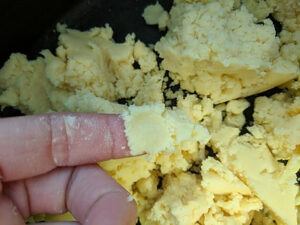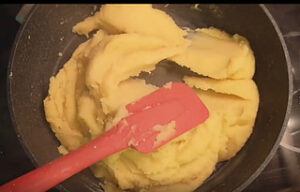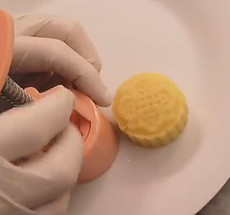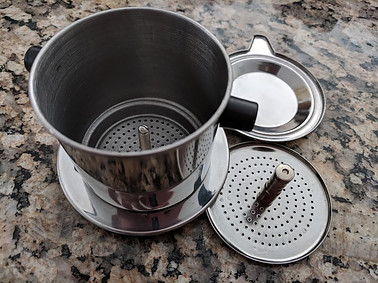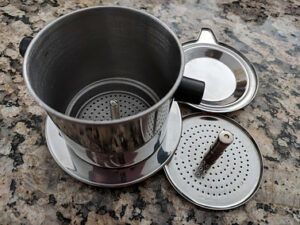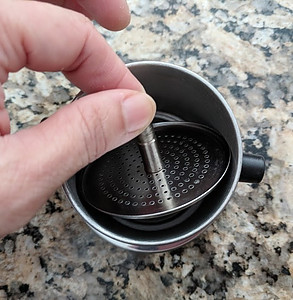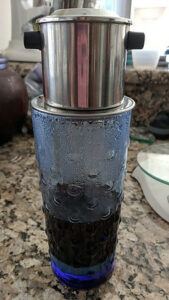In this article, we will be showing you how to make a Vietnamese Chicken Rice Porridge also known as Cháo Gà using an Instant Pot. The Chicken Porridge is a rice gruel for breakfast, lunch, or dinner. It is light yet filling. Not to worry if you do not know what Instant Pot is. Please click ==> Review on Instant Pot to know more.
Like chicken soup in the United States, it is used as a Vietnamese cold remedy. Many people believe that the warmth of the broth and the wholesomeness of the chicken help regain one’s strength. It kinda likes chicken noodle soup instead of noodles we use rice.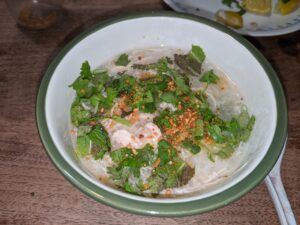 This recipe can be used with minimally 4 ingredients: chicken, rice, water, and salt. However, the extra ingredients enhance the flavor. If we have the extra ingredients, why not use them. There are many ways to make Cháo Gà. My way is one of many. I like to start with simple successes and then add on.
This recipe can be used with minimally 4 ingredients: chicken, rice, water, and salt. However, the extra ingredients enhance the flavor. If we have the extra ingredients, why not use them. There are many ways to make Cháo Gà. My way is one of many. I like to start with simple successes and then add on.
We had a live video of making Chao Ga online — Here is the video:
As the owner of this website, I tracked down special deals for some products or services mentioned herein. As an Amazon Associate, I earn from qualifying purchases. When you use the link from this page to make a purchase, I may receive a small commission, and you may receive a great bargain – Full Disclosure.
Ingredients
This recipe serves 4 people. It takes about 60 to 70 minutes to complete the whole process.
- 2 chicken breasts, approximately 1 to 2 pounds
- 1 cup of Jasmine rice or your favorite rice
- 6 cups of water (or optional chicken broth)
- ½ an onion or ¼ cup finely chopped onion
- 1 to 2 slices of ginger
- 2 tablespoons fish sauce or soy sauce
- ¼ teaspoon salt
- ¼ teaspoon sugar
- ¼ teaspoon black pepper
- ½ lemon, quartered
- ¼ cup of finely chopped fresh cilantro (optional)
- ½ pound bean sprouts (optional)
- Sprinkle of ground roasted peanuts (optional)
Prep the Rice
First, put a cup of rice in a bowl and rinse the starch from the rice. When the water becomes clear, drain the water. It’ll take approximately 2 to 3 minutes. The main reason I clean the rice because sometimes we find unwanted items such as little pebbles, dirt, or even bugs. The bugs are not uncommon especially when you are keeping the bag of rice in the moist area and/or on the ground.
Roast the rice in a frying pan or an IP (Instant Pot) using sauté mode. Make sure the saute heat is medium or low. Constantly, stir the rice every 30 seconds or the rice will burn and stick to the pan. Roast the rice until all the water has evaporated and the rice is dried. This will take about 3 to 4 minutes. You don’t have to roast the rice. This method adds a subtle nutty roasting flavor to the porridge.
Prep the Chicken
Pour about 4 to 6 cups of water in the IP and push sauté high mode. Wait for 6 minutes or until the water boils, add the chicken breast for one quick minute. At this point, we are only cleaning the chicken to reduce excess fat and the foul odor. Press cancel or turn the pot off. Drain the water.
Leave the chicken in the pot and add 6 fresh cups of water or chicken broth. The chicken broth will help enhance the flavor of your porridge. However, if you don’t have chicken broth, water will do. Also remember, if you use mostly chicken broth, reduce the fish sauce or salt seasoning. The chicken broth may have seasoning of its own. You can add less seasoning and slowly add as needed to taste.
 Press pressure-cook. If you are using 1 to 2 pounds of chicken, adjust the cooking time to 7 minutes.
Press pressure-cook. If you are using 1 to 2 pounds of chicken, adjust the cooking time to 7 minutes.
The time depends on the weight of the chicken. Check the IP pressure cooker time chart. In my case, I have 1 lb. 2 oz. chicken so I put the timer for 7 minutes. It will take around 2½ minutes for the IP to pressurize and then cook for 7 minutes. When you are cooking on a regular stove, it will take about 30 to 40 minutes to make the porridge broth.
Prep the other Ingredients
While the IP is going, clean the cilantro, onion, and ginger. Dice the onion or leave it whole. I usually leave it whole so I can scoop it out when the porridge is done. I mostly want the onion flavor. You can leave it in if you like the onion texture. By the time the porridge is completed, the onion will be very mushy. Cut the cilantro into small pieces. Sliced one to two slices of ginger. Remember to remove the skin. You can add more ginger if you like. I prefer just a scent of ginger flavor. Quarter the lemon.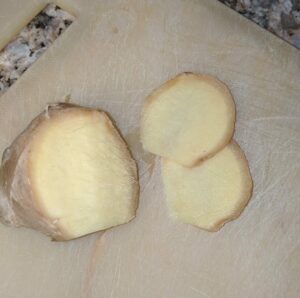
Once the IP pressure-cooking is done, open the valve to depressurize. It takes about 2 minutes. I usually cover the valve with a towel that you do not mind getting wet or dirty. The steam and water may spatter everywhere. Once the IP is depressurized, you can now open the lid.
Add rice, onion, ginger, and pepper to the chicken. Close the lid. Now press the porridge button. Adjust the timer to cook for 15 minutes. When using a cooking stove, it will take at least 60 minutes before the porridge is the right consistency.
Adding Flavors
Once the time is up, I leave the IP to depressurize naturally for 15 to 17 minutes or manually depressurize the IP. Press cancel when the lid can be opened. Check for the porridge consistency. It should not be too thick where the spoon gets stuck moving around. It will be like soup. Press sauté and have it at low mode. 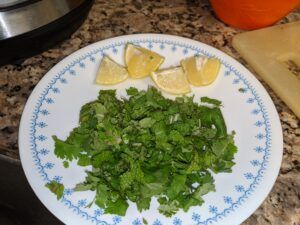
At this point, you should be able to use a spoon and a fork or chopsticks to shred the cooked chicken breasts inside the pot. It should fall apart pretty easily. Add fish sauce or soy sauce and salt. If you do not have either fish sauce or soy sauce, you can try salt only. Add 1 teaspoon first. If it is not salty enough add another teaspoon and so on. I would not add all 2 tablespoons of salt at the same time. It may end up too salty and you will have a hard time fixing it.
Add sugar and pepper. Instead of MSG, we use sugar. It is a great flavor enhancer to compliment the salt. Mix well for another minute or two. This will help thicken the broth. The longer you cook the thicker the porridge. Make it to the consistency that you prefer. Turn off the IP and get ready to serve.
When served, you can add cilantro and bean sprouts. Squirt in the lemon juice and sprinkle over the porridge with ground roasted peanuts. Soothe your throbbing and scratchy throat or warm yourself with a pleasant bowl of porridge on a cool drizzly morning!!!

Conclusion
With Vietnamese chicken rice porridge, you can make it simple with the four basic ingredients or you can go all out with pork including organs such as intestines, liver, blood cubes, stomach lining, etc. Sounds yummy, doesn’t it. That is a special authentic treat for Vietnamese. Here is a YouTube video of how to make Vietnamese Chao Long:
I have not tried this recipe yet. I found it to share so that you can see the differences. I personally prefer simple chicken porridge.
You can also download this recipe –> Vietnamese Chicken Porridge chao ga
I love to hear your experiences with chicken rice porridge, whether you have never made them before or you are a pro at it, please leave me your thoughts below.
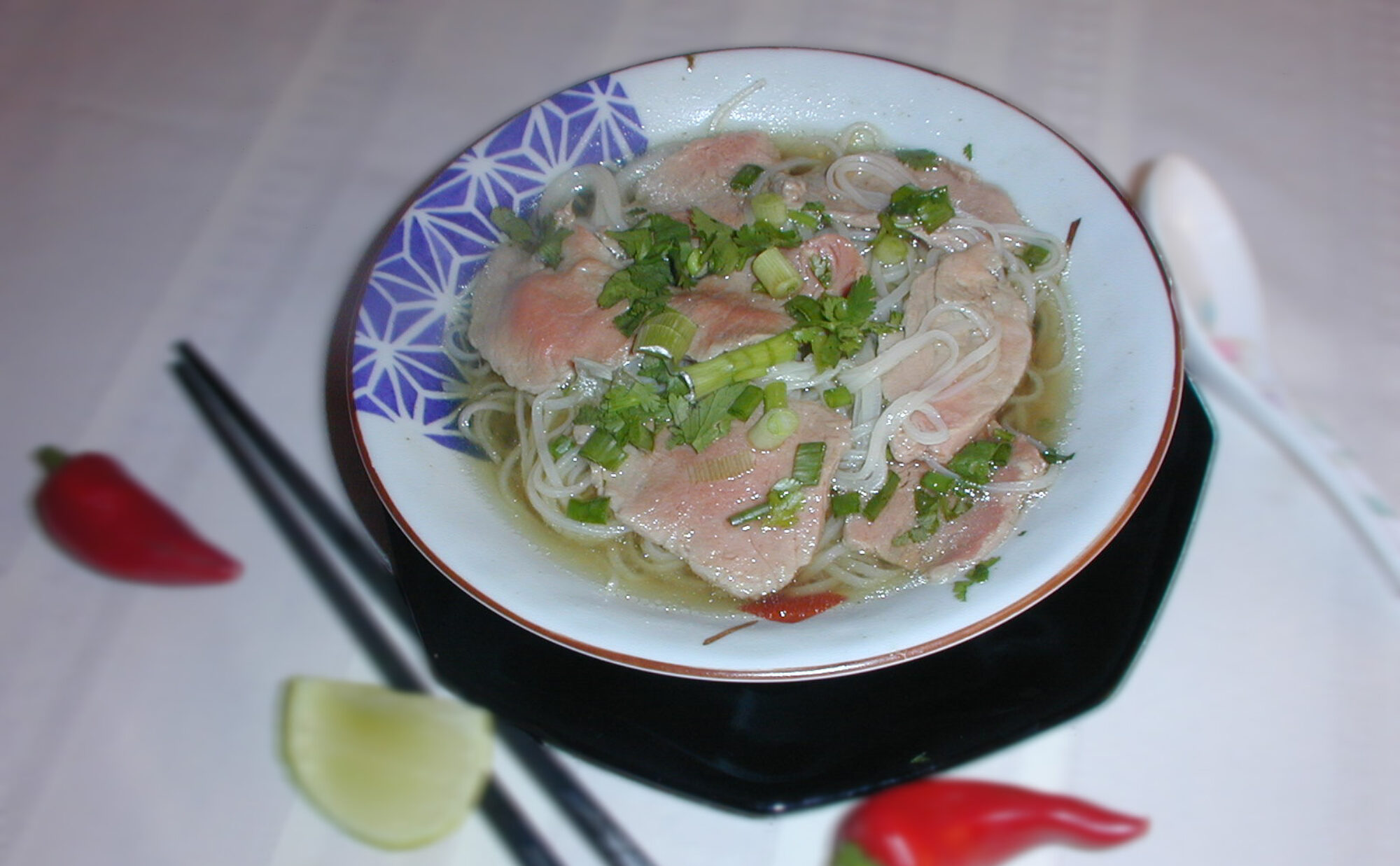
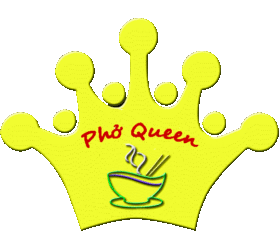
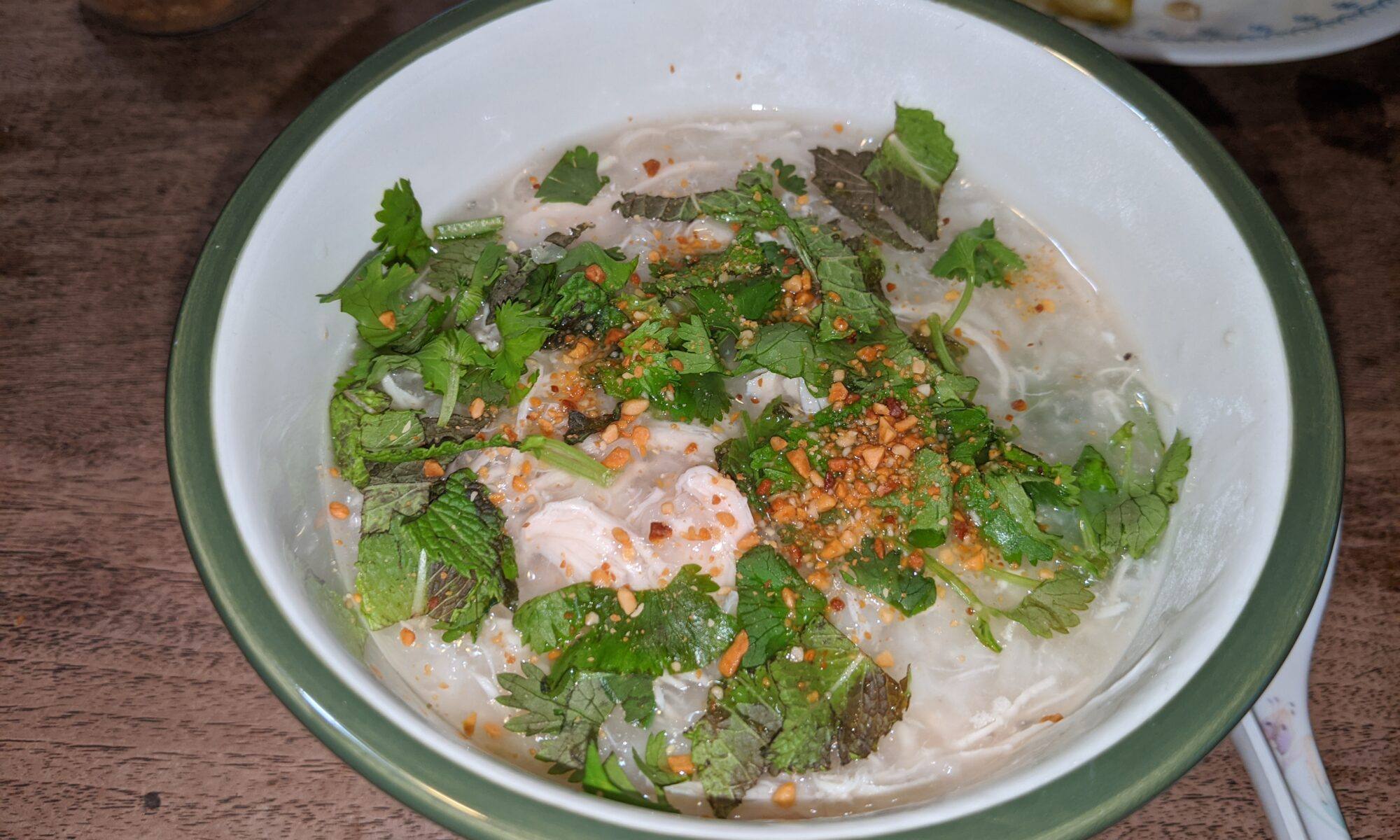



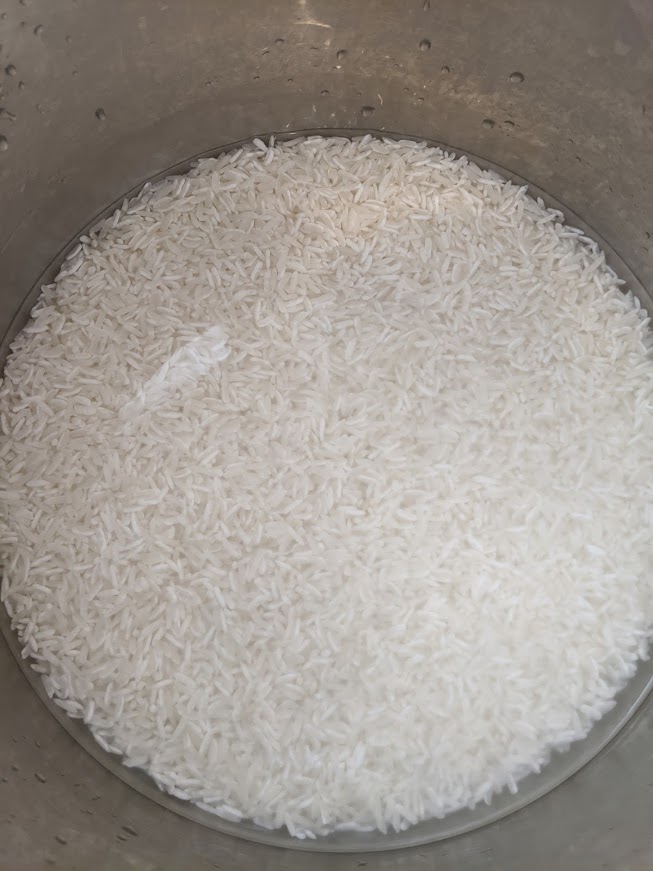


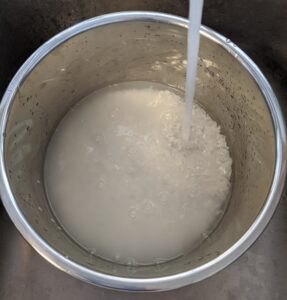
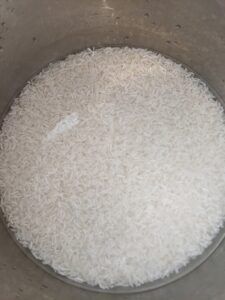
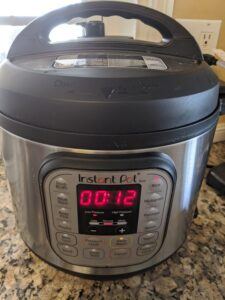
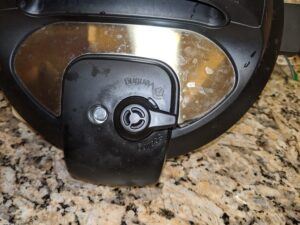
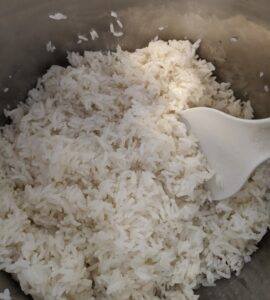 Yes, the Instant Pot does make rice. The rice turns out mediocre in comparison to the standalone rice cooker. I noticed that there was a lot of water condense under the lid causing the rice to be wet and dense. However, Instant Pot is great at pressure cooking. If you are not familiar with Instant Pot and would like to learn more, click on my
Yes, the Instant Pot does make rice. The rice turns out mediocre in comparison to the standalone rice cooker. I noticed that there was a lot of water condense under the lid causing the rice to be wet and dense. However, Instant Pot is great at pressure cooking. If you are not familiar with Instant Pot and would like to learn more, click on my 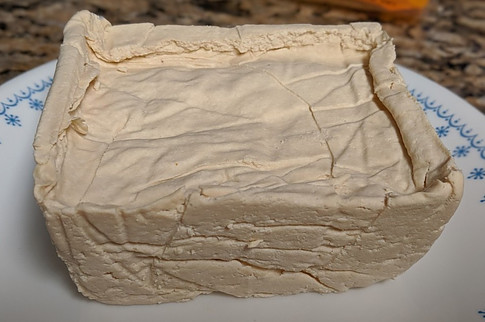
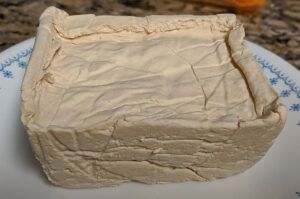



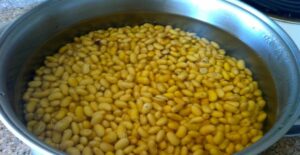
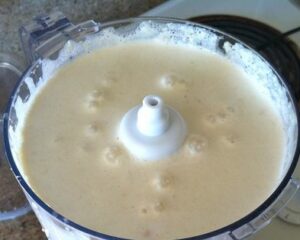
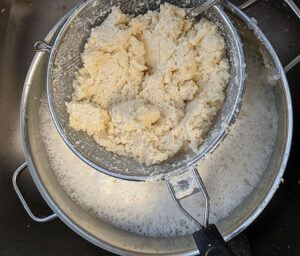 If enjoy soy milk, pour out one to two cups of soy milk for your consumption at this point and continue with the rest to make tofu. Add sugar, honey, or any of your sugar substitute if desire to your soy milk. Drink it fresh and warm or refrigerate and have it cold.
If enjoy soy milk, pour out one to two cups of soy milk for your consumption at this point and continue with the rest to make tofu. Add sugar, honey, or any of your sugar substitute if desire to your soy milk. Drink it fresh and warm or refrigerate and have it cold.![LinasD (this version uploaded by SlimVirgin) [CC BY-SA 3.0 (https://creativecommons.org/licenses/by-sa/3.0)] soymilk](https://tastyphoqueen.com/wp-content/uploads/2020/07/soymilk-190x300.jpg)
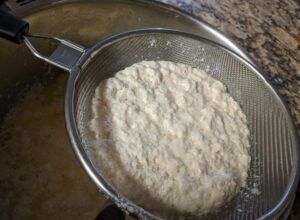
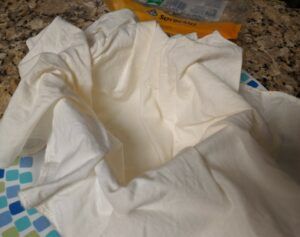



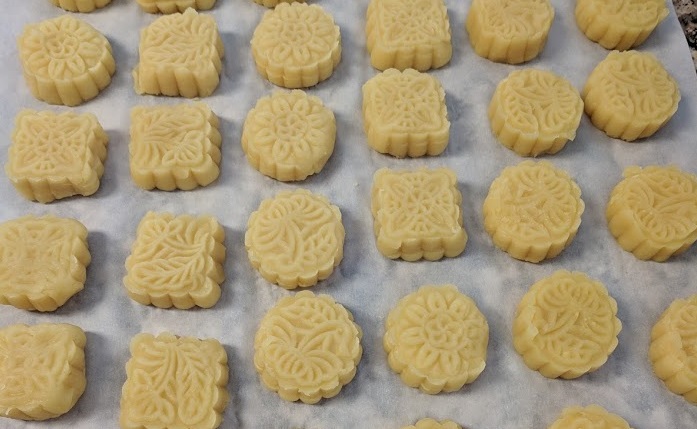
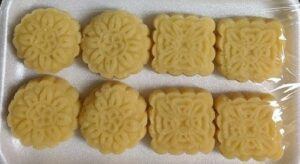 In this article, we will be showing how to make a Vietnamese Mung Bean Dessert called “Bánh Đậu Xanh”. They are available primarily during the Vietnamese holidays. “Bánh Đậu Xanh” is also known as mung bean cakes. You can find them in Asian stores during Tết New Year or Harvest Moon Celebration.
In this article, we will be showing how to make a Vietnamese Mung Bean Dessert called “Bánh Đậu Xanh”. They are available primarily during the Vietnamese holidays. “Bánh Đậu Xanh” is also known as mung bean cakes. You can find them in Asian stores during Tết New Year or Harvest Moon Celebration.


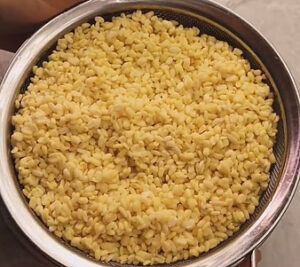
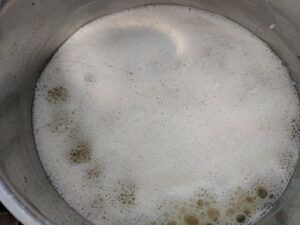 Then we pour out all the foam. Pour out most of the water and leave very little water left. How much is little? It is a judgment call on your part. We don’t want to see the water. The only time you would see the water is when you lean the pan over to one side. You could then see the water. The intention is for the mung beans to be cooked just right, not too dry then it’ll be flaky and not too wet then it’ll be mushy.
Then we pour out all the foam. Pour out most of the water and leave very little water left. How much is little? It is a judgment call on your part. We don’t want to see the water. The only time you would see the water is when you lean the pan over to one side. You could then see the water. The intention is for the mung beans to be cooked just right, not too dry then it’ll be flaky and not too wet then it’ll be mushy.
